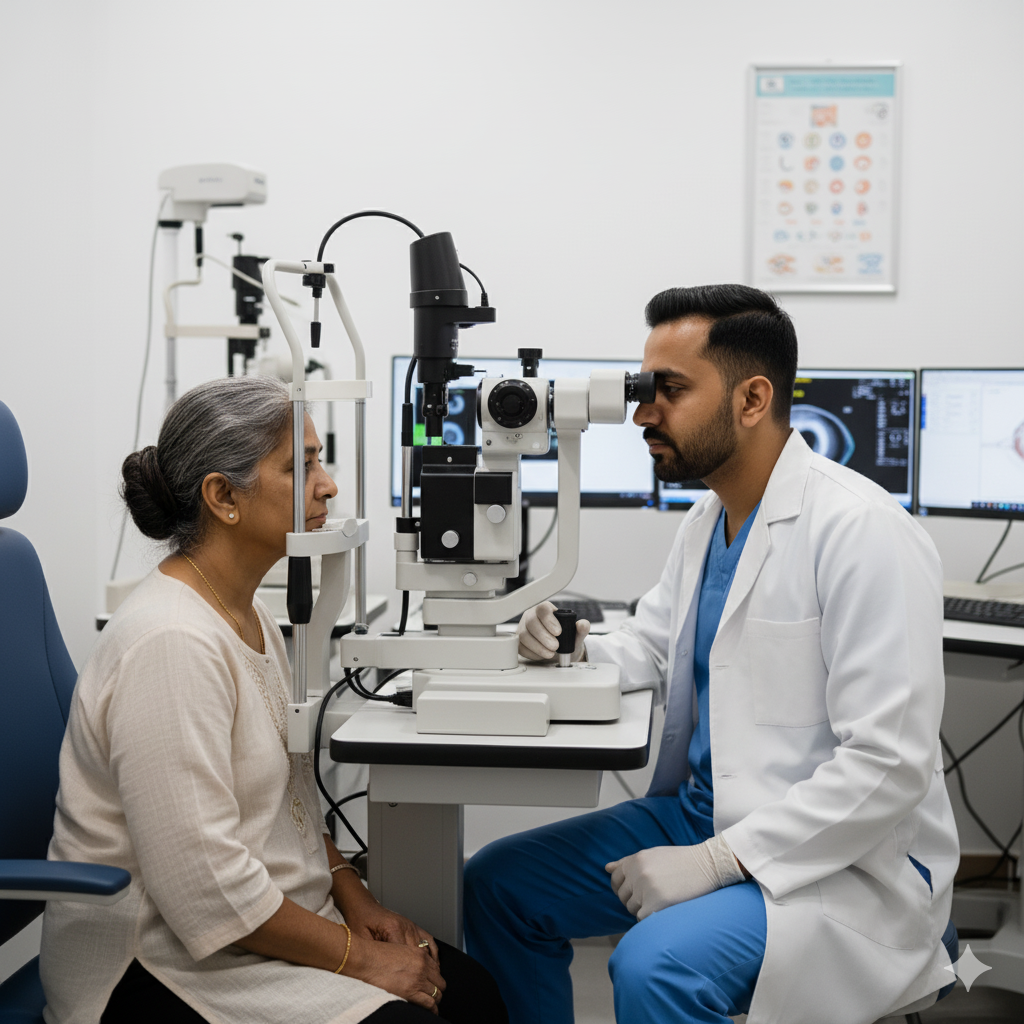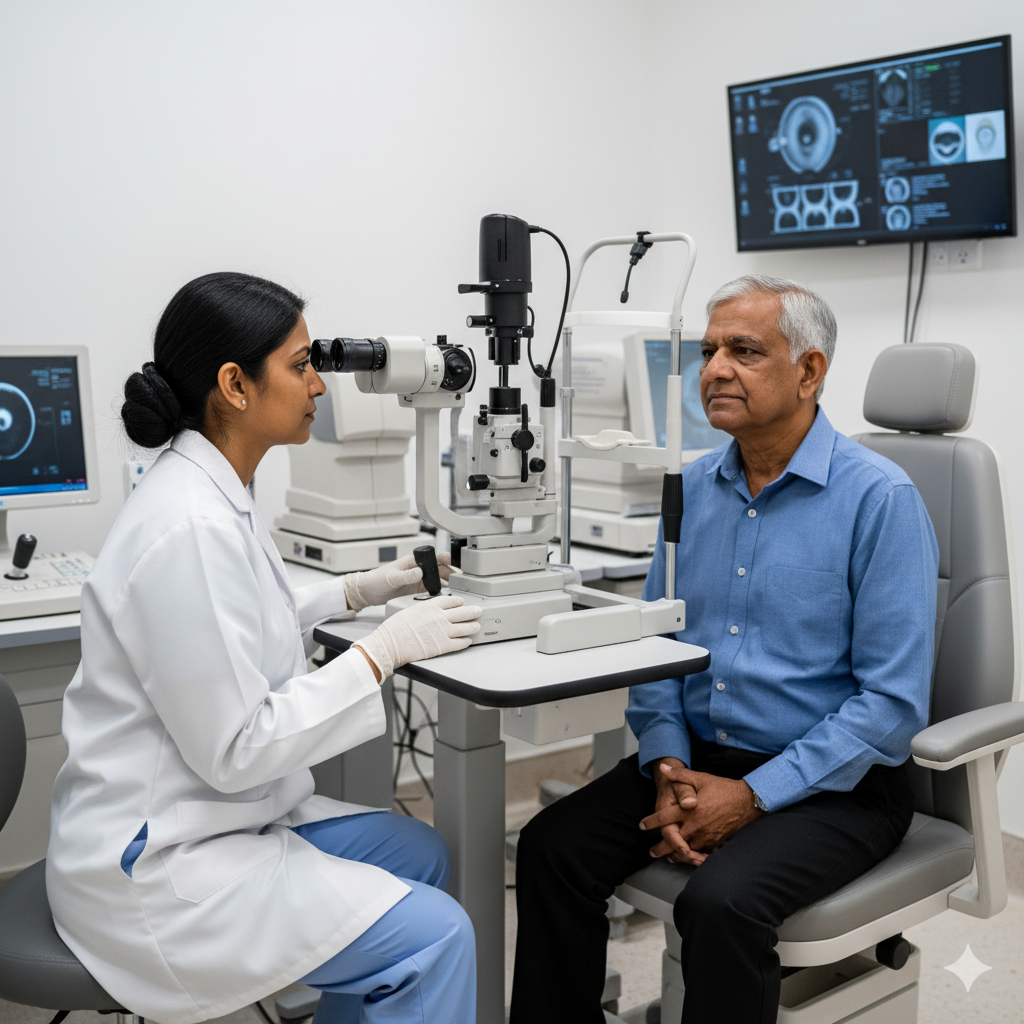


Glaucoma is an eye condition that damages the optic nerve, often due to increased pressure inside the eye . It can lead to gradual vision loss if left untreated. Early stages usually show no symptoms, making regular check-ups essential. With timely diagnosis and treatment, further vision damage can be prevented.
Glaucoma is a serious eye condition that damages the optic nerve, often due to increased eye pressure. Early detection and treatment are crucial to prevent permanent vision loss.
Early symptoms are minimal, making regular eye exams essential for detection. With timely treatment, further vision damage \ can be prevented effectively.

Glaucoma is an eye disease that damages the optic nerve, usually due to high eye pressure.